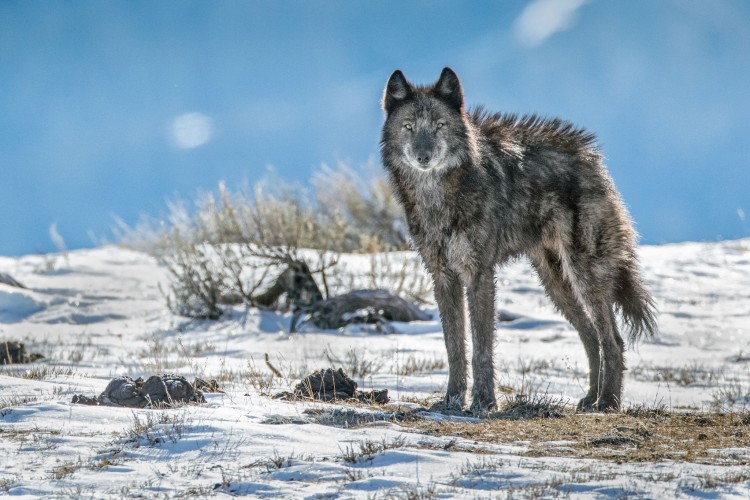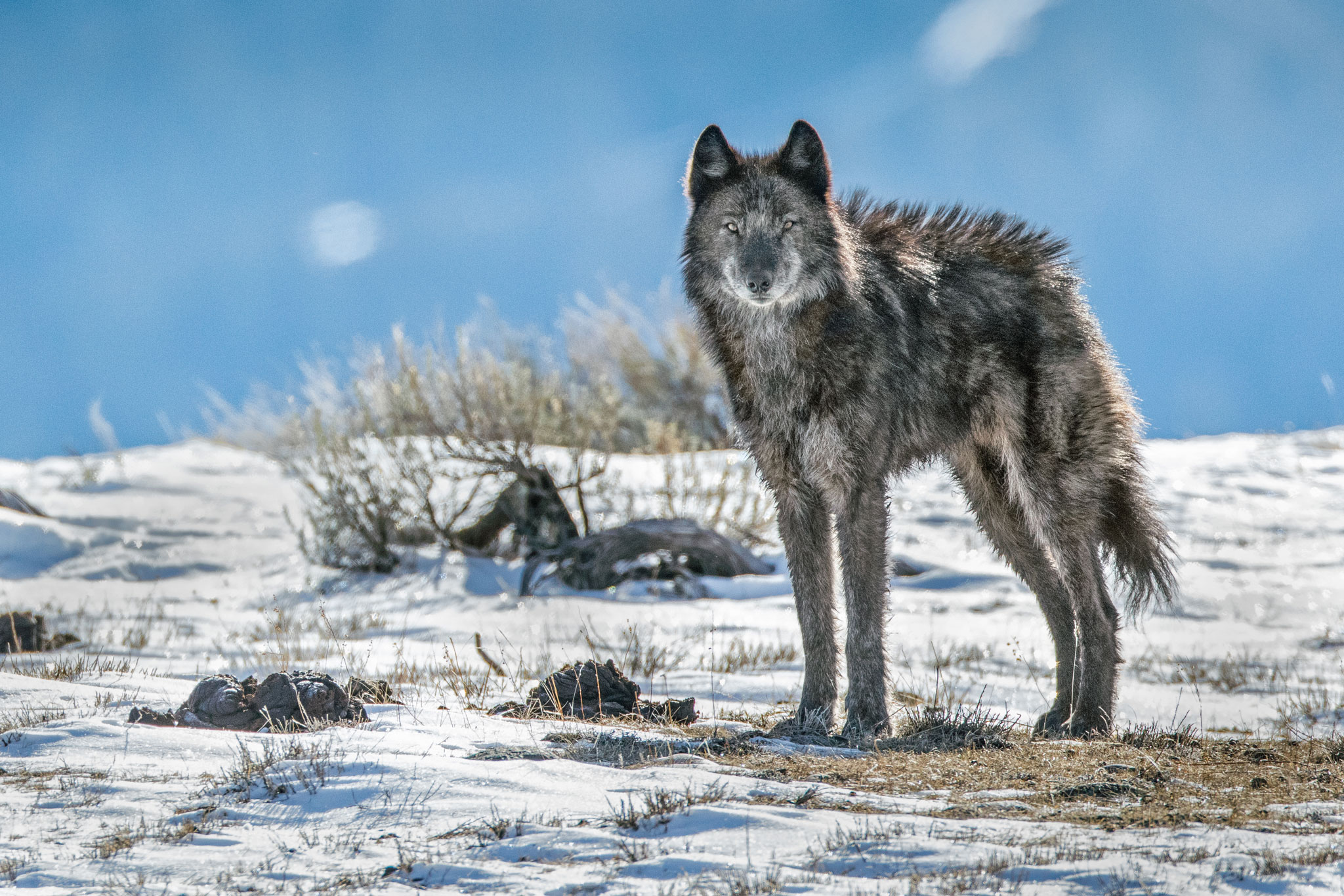
Part two in our series on the park takes us into the backcountry, where predator and prey form a delicate balance in a great ecosystem.
In 1995 and 1996, some 70 years after Yellowstone’s last wolf howled its last howl, 31 wolves from western Canada were released from acclimation pens across the park. They took hold of the landscape, they proliferated, they thrived in the park, and spread throughout the region. Another 35 wolves were released in central Idaho at about the same time. Twenty years later roughly 500 wolves inhabit the Greater Yellowstone Ecosystem. Thirteen hundred more live elsewhere in the northern Rockies, and the gray wolf—that’s the common name, although individuals vary in color from pale brindle to black—has been removed from endangered species listing in Idaho and Montana. Wolves can now be legally hunted and trapped there. (The Wyoming situation is more complicated.) Today about a hundred wolves, constituting ten packs, live primarily within Yellowstone National Park, where Doug Smith, head of the Yellowstone Wolf Project, leads the effort to monitor, manage, and protect them.
On a cold December morning at an airport near Gardiner, Montana, just north of the park, I buckled into the back of a cherry-red Hughes 500D helicopter beside Smith for a glimpse of the project in action. Smith has worked with wolves for 37 years, with Yellowstone’s since their reintroduction, and has handled more than 500 individuals while they were tranquilized for collaring. He’s a tall man with a gray handlebar mustache and crow’s-feet that pinch around his smiling eyes. Seconds after we were securely aboard, the chopper levitated and then plunged toward the Yellowstone River under the touch of Jim Pope, a wildlife-capture pilot with an aerobatic flair. He leveled us off and then climbed again, sweeping south into the park, across the foothills, up over Sepulcher Mountain. Freezing wind ripped through our bubble as the treetops flashed by 200 feet below. Then we set down gently on a clear patch of snow behind Sepulcher. Pope’s crew—a pair of “muggers,” whose job was to fire a charge-propelled net, jump out, and tranquilize captured animals—had already immobilized two wolves.
Source: The Yellowstone National Park We Don’t See: A Struggle of Life and Death
